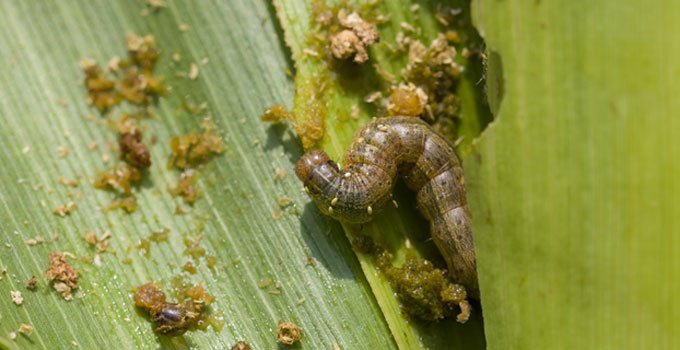The African Development Bank (AfDB) will on July 26-27, 2018, host “From Plan to Action,” a meeting on controlling Fall Armyworm in southern Africa.
The meeting will bring together government representatives and experts from the Food and Agriculture Organization (FAO), United States Agency for International Development (USAID), the Alliance for a Green Revolution in Africa (AGRA), Sygenta Foundation and the International Institute of Tropical Agriculture (IITA) to Lusaka, Zambia.
Key private sector representatives, seed companies, farmers and policy makers from Angola, the Democratic Republic of Congo, Malawi, Mozambique, Tanzania, Zambia and Zimbabwe, are also expected to attend.
According to experts, Fall Armyworm, or Spodoptera frugiperda, is an insect that is native to tropical and subtropical regions of the Americas. In its larva stage, it can cause significant damage to crops, if not well managed. The worm prefers maize but can feed on more than 80 additional species of plants including rice, sorghum, millet, sugarcane, vegetable crops and cotton.
Fall Armyworm was first detected in Central and Western Africa in early 2016 and, according to FAO, has since been detected and reported in all of Sub-Saharan Africa, with the exception of Djibouti, Eritrea, and Lesotho.
Experts say that Fall Armyworm is a dangerous transboundary pest with a high potential to continually spread due to its natural migratory capacity. “Without appropriate action, it could cause 21 to 53 percent of maize yield losses in 12 African countries within five years,” they say. The value of these losses is estimated at between US$2.48 billion and US$6.19 billion. Northern Africa and Madagascar are also at risk.
In the second season of 2016, reports of a severe outbreak of dangerous worm on maize plants in the districts of Kasese, Kayunga and Bukedea emerged. And a reconnaissance visit made to these districts found that almost 40 percent of the maize crops in the fields visited were attacked by the pest.
The pest would later be confirmed in 54 districts including; Kibaale, Kamwenge, Masindi, Nwoya, Mayuge, Kyenjojo, Mukono, Kamuli, Luwero, Rakai, Buliisa, Kabarole, Kumi, Serere Kibaale, Kiryandongo, Luuka, Bugiri and Iganga among others.
Based on the estimated yield loss of 15-75 percent elsewhere, the presence of the FAW in Uganda then could translate to an annual loss of at least 450,000 metric tonnes of maize that is equivalent to US$192,857,000.
According to the Uganda Bureau of Statistics, Uganda produces close to four million metric tons of maize grain annually making it the third highest crop produced. Maize contributes to the livelihoods of over 3.6 million households.
As part of its Technologies for African Agriculture Transformation (TAAT) agenda, the African Development Bank established a Compact of Fall Armyworm to mobilize support from researchers and the public and private sector, to confront the menace. The Compact seeks to identify new technologies to combat the pest and distribute them to smallholder farmers across the continent.
Participants will look at ways to deploy the most effective Fall Armyworm-combating technologies to tens of millions of smallholder farmers in the shortest possible time. One focus will be on the Syngenta Foundation’s seed treatment pesticide known as Fortenza Dou, considered effective against Fall Armyworm.





